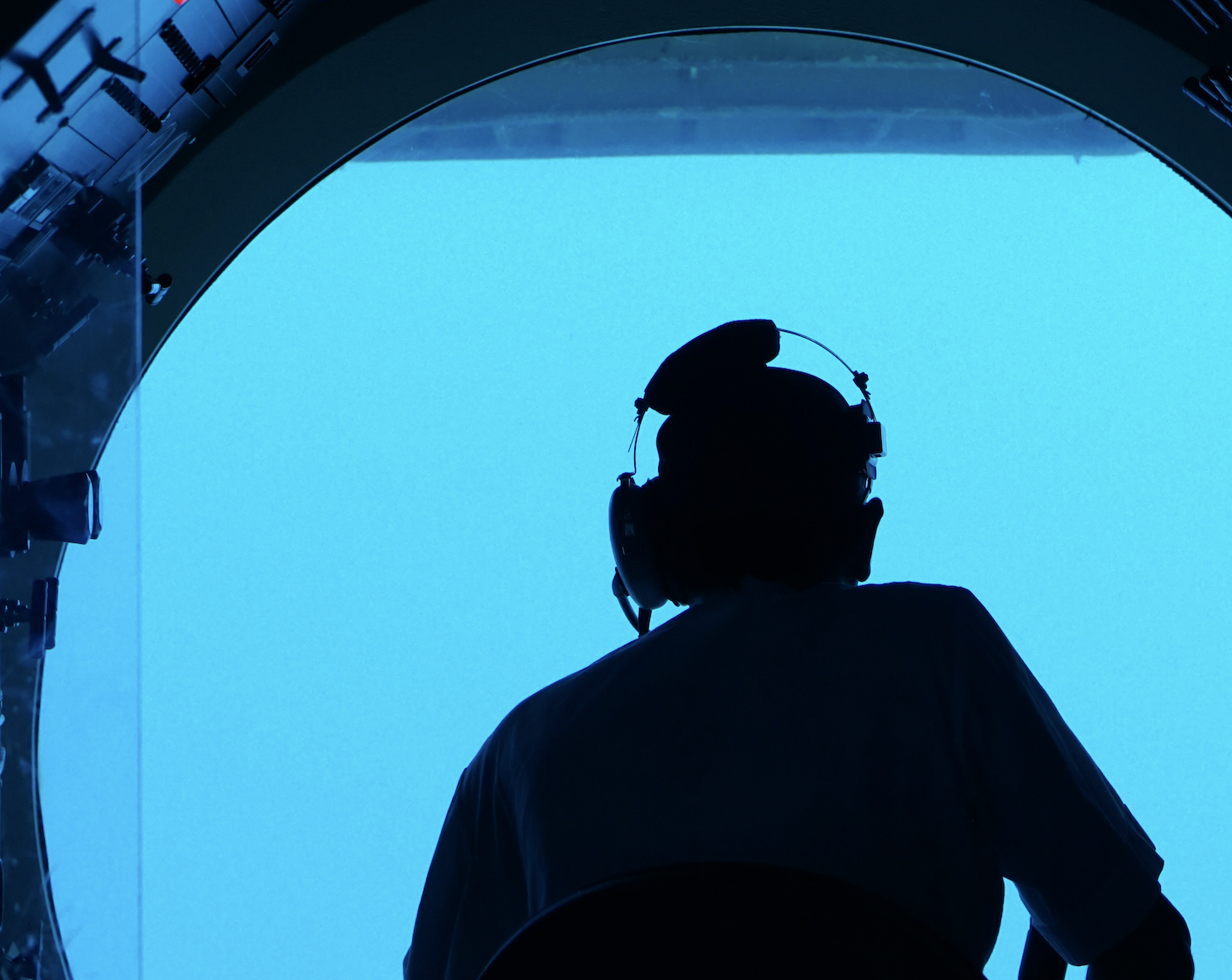Photo by Teo D
Scientists have discovered extensive communities of marine life thriving in some of the deepest and most extreme environments on Earth, revealing ecosystems that challenge fundamental assumptions about the limits of life in the ocean’s most remote depths.
A Chinese-led international research team using the crewed submersible Fendouzhe found flourishing chemosynthesis-based communities at depths ranging from 5,800 to 9,533 meters (19,000 to 31,000 feet) in Pacific Ocean trenches, marking the deepest extensive animal communities ever documented.
Record-breaking depths of life
The discoveries, published in the journal Nature, were made during 23 dives conducted between July and August 2024 in the Kuril-Kamchatka and Aleutian trenches in the northwest Pacific Ocean. The research team documented dense clusters of tubeworms, some growing up to 30 centimeters (12 inches) long, along with beds of clams up to 9 inches long.
Dominic Papineau, senior research scientist at the Chinese Academy of Sciences and co-author of the study, told NBC News: “This is the first time chemosynthesis-based communities have been directly observed at extreme depths.”
The deepest community discovered was located 9,533 meters below the surface, representing almost 25% deeper than such animals had previously been documented anywhere.
Chemical-powered ecosystems
Unlike most life on Earth that depends on photosynthesis, these deep-sea communities survive through chemosynthesis – a process where organisms derive energy from chemical reactions rather than sunlight. The creatures are sustained by hydrogen sulfide-rich and methane-rich fluids that are transported along faults traversing deep sediment layers in trenches.
Julie Huber, a deep-sea microbiologist with Woods Hole Oceanographic Institution who was not involved in the research, emphasised the significance of the findings: “Look how many there are, look how deep they are. They don’t all look the same and they’re in a place that we haven’t had good access to before.”
Extreme survival conditions
The creatures inhabit environments of extraordinary extremes, facing constant crushing pressure of up to 98 megapascals (MPa), which is more than six times the force of an alligator’s bite. They survive in total darkness and near-freezing temperatures.
Xiaotong Peng, deputy director of the Institute of Deep-sea Science and Engineering at the Chinese Academy of Sciences and study co-author, described the environment: “The ocean environment down there is characterised by cold, total darkness and active tectonic activities.”
Diverse marine communities
The research documented a remarkable variety of life forms. Scientists observed spiky, bright marine worms darting through fields of crimson tubes, dense beds of clams, and snow-like microbial mats creating an ethereal undersea dusting, dozens of feet wide.
Marine ecologist Kareen Schnabel from Earth Sciences New Zealand, who was not involved in the study but has previously used the same submersible, described the discovery as “really rather unusual,” noting there were “signs of really abundant, large life forms and animals in these particularly deep areas.”
Symbiotic relationships
Many of the discovered organisms survive through complex symbiotic relationships with chemosynthetic bacteria. Papineau explained that the hadal animals “survive by hosting microbes that metabolise methane, rather than through photosynthesis.”
The tubeworms, in particular, house symbiotic bacteria within their bodies that convert chemical compounds into nutrients, while the molluscs and other creatures may survive by eating these microbe-hosting organisms or consuming the products of their chemical processes.
Challenging scientific assumptions
The discoveries have significant implications for understanding life’s limits on Earth. The researchers noted that their findings “challenge current models of life at extreme limits” and suggest that these ecosystems might be more widespread than previously thought.
Lisa Levin, professor emeritus of biological oceanography at Scripps Institution of Oceanography, who was not involved in the study, said the bottom dwellers “alter our understanding of trench ecosystems.” She noted that while scientists have long studied organisms around hydrothermal vents, creatures living around cold seeps have been understudied.
Widespread distribution potential
The research team found life on 19 of 23 dives over a 40-day period, suggesting that hadal ecosystems may be common in Earth’s ocean trenches. Given geological similarities with other hadal trenches, the researchers concluded that “such chemosynthesis-based communities might be more widespread than previously anticipated.”
Technological achievement
The discoveries were made possible by the Fendouzhe submersible, a three-person vessel capable of reaching extreme depths. Schnabel, who has used the submersible previously, described the experience: “You have a small window that is only 12 centimeters in diameter that you can look out of. You can’t stretch your legs while you’re sitting on a little bench in a small titanium sphere, which is only 1.8 meters wide.”
Despite the cramped conditions, she emphasised her amazement at the discoveries: “When I got to go down, and we actually settled down on the ocean floor to have a look, I was stunned to see how much life and how many animals there were.”
Scientific significance and future implications
The research represents a major advance in understanding deep-ocean ecosystems. Lead author Mengran Du from the Chinese Academy of Sciences described what she witnessed as “unbelievable,” comparing the scene to “dense clusters of tubeworms with tentacles tinged bloodred, jutting up like skyscrapers.”
The findings have implications beyond Earth science. The extreme adaptability of organisms in these trenches provides insights for astrobiological research, particularly in the search for life in oceans on other worlds such as Jupiter’s icy moon Europa.
Future research priorities
The research team expects that several specimens collected from the trenches will yield species new to science, though the exact number remains to be determined. Future studies will focus on understanding how these deep-sea creatures adapted to survive in such extreme conditions and the precise mechanisms by which they harness chemical reactions for sustenance.
The discoveries also highlight the vast unexplored nature of deep-ocean environments. Recent studies indicate that humans have explored just 0.001% of the deep seafloor below 200 meters, leaving enormous potential for future discoveries in Earth’s least accessible frontiers.
